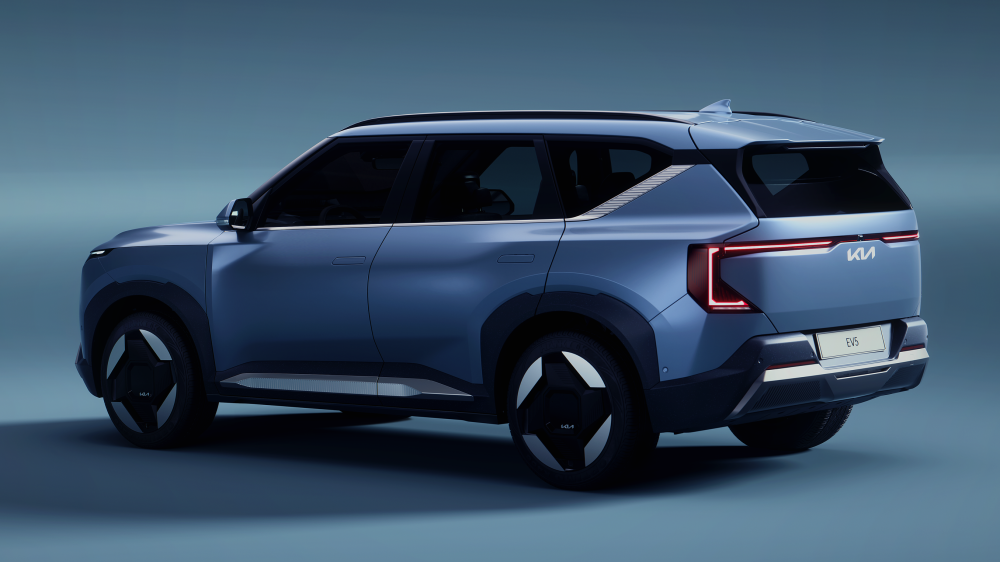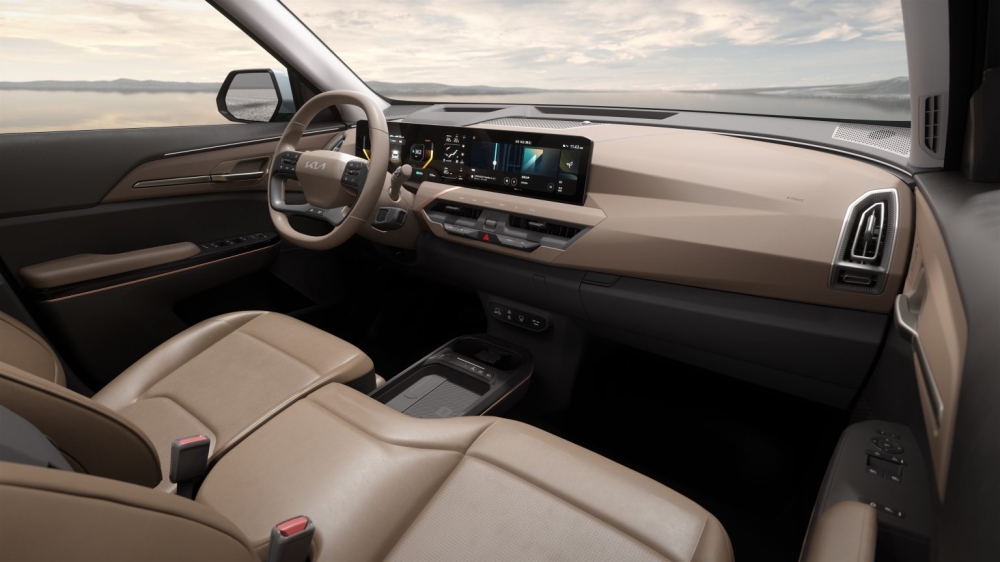KUALA LUMPUR, Aug 27 — Just five months after the debut of the Concept EV5, Kia has pulled the wraps off the production EV5, a compact electric SUV that will rival cars like the Volvo XC40 Recharge, BMW iX1 and Mercedes-Benz EQA. As expected, it looks a lot like the show car, the angular mini-EV9 design translating to the showroom pretty much intact.
That means you get a rather upright body with a floating roof, strong haunches and chiselled sides. At the front, you’ll find intersecting LED daytime running light lines inspired by constellations, combining with the clamshell bonnet to form the Kia “tiger mask” graphic. The company also says the cab-backward design and upswept window line emphasises the spaciousness of the interior, while the rear is dominated by the wide C-shaped taillights.

The EV9 inspiration continues on the inside, with a similarly geometric dashboard housing a widescreen display panel, likely featuring the EV9’s twin 12.3-inch screens and a third five-inch screen in between — the latter for displaying vehicular functions such as the air conditioning. You still get a “floating” centre console with twin cupholders and a Qi wireless charger, but the most unique part of the interior is the passenger seat that spills over to the driver’s seat. Despite this, the EV5 is a strict five-seater.
Elsewhere, you’ll find customisable ambient lighting with 64 colours and ten curated colour schemes; it will also dim at night and alert the driver if they stray over the speed limit. Buyers can choose from four colours and five different seat patterns, including fabric and faux leather options.

Kia has yet to release any details and technical specifications for the EV5, reserving them for its EV Day in October. It will almost certainly be based on Hyundai’s Electric Global Modular Platform (E-GMP) that also underpins the EV6 and EV9. It’s also been reported that the car will be offered with BYD’s Blade lithium iron phosphate (LFP) battery in China — where it will be launched first — although other markets will apparently receive a more conventional lithium-ion battery. — SoyaCincau






















